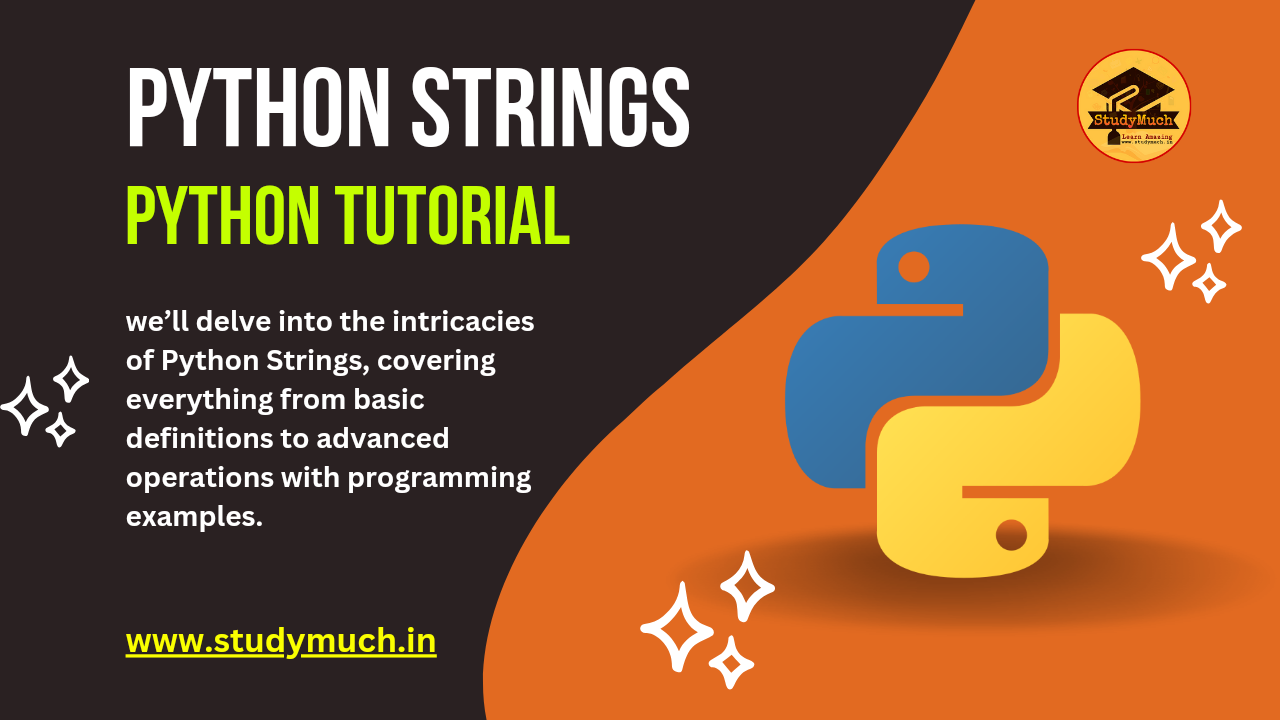Python Strings

Python Strings: A Comprehensive Guide
In the world of programming, strings are an essential concept that you will encounter in almost every application. In Python, strings are versatile and powerful data types that allow you to work with text-based information. In this blog post, we’ll delve into the intricacies of Python Strings, covering everything from basic definitions to advanced operations with programming examples.
What is a String?
A string is a sequence of characters enclosed within single (”) or double (“”) quotation marks. It can contain letters, numbers, symbols and even spaces. Python also treats a single character as a string, allowing for flexible manipulation of text-based data.

Single or Double Quotes?
Both single and double quotes can be used to define strings, and the use of one type of quotation does not affect the functionality of the string. This flexibility comes in handy when you need to include quotes within the string itself.
However, if your string contains double quotes use single quotes, and if your string contains single quotes use double quotes.
single_quoted = 'This is a single-quoted string.' double_quoted = "This is a double-quoted string." print(single_quoted) print(double_quoted)
Multi-Line Strings
For strings that span multiple lines, you can use triple quotes (either single or double). This is particularly useful for docstrings, comments, or for creating well-formatted text blocks.
multi_line =''' This is a multi-line string using triple quotes.''' print(multi_line)
Concatenating Strings
Concatenating Strings means simply combining or adding strings together. This operation combines two or more strings into a single string. To combine strings, use the plus sign, (+).
f_name = "Shubham" l_name = "Verma" full_name = f_name + " " + l_name print(full_name)
Escaping Characters in a String
Sometimes, you might need to include special characters within a string, like a newline or a tab. To achieve this, you can use escape characters preceded by a backslash \.
Escape characters is important in handling strings. It helps us make sure that our strings are recognized as pieces of text, and not as part of the code.
message = "This is a line of text.\nAnd this is a new line." indented_text = "Indented line:\tTabbed text." print(message)

Accessing Parts of a String
You can access individual characters of a string using indexing. In Python, indexing starts from 0 for the first character, -1 for the last character, and so on. Indexing use square bracket ([]) to access characters.
text = "Hello, World!" first_character = text[0] # 'H' last_character = text[-1] # '!' print(first_character) print(last_character)
Slicing Strings
Slicing allows you to extract a portion of a string. It’s done by specifying the start and end indices, where the end index is exclusive.
To access a range of characters, use slicing, Slicing also uses square brackets ([]).
The square brackets can contain two integers separated by a colon (:), the first integer is the start index, and second integer is the end index (exclusive).
text = "Python Programming" substring = text[0:6] # 'Python' print(substring)
Conclusion;
Python Strings are the building blocks for working with text-based data in your programs. Whether you’re working with single or double quotes, multi-line strings, concatenation, escaping characters, or accessing specific parts of a string, understanding these fundamental concepts is crucial for effective programming. I hope you have understood this topic, if you have any doubt, ask in the comment section.
Learn Also;


0 Comments